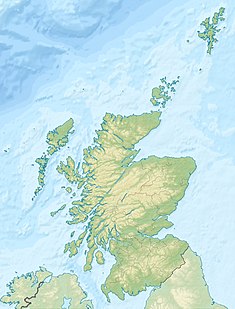Hunterston A nuclear power station
| Hunterston A nuclear power station | |
|---|---|

The Hunterston A Magnox reactor buildings
|
|
| Country | Scotland |
| Location | North Ayrshire |
| Coordinates | 55°43′20″N 4°53′24″W / 55.72222°N 4.89000°WCoordinates: 55°43′20″N 4°53′24″W / 55.72222°N 4.89000°W |
| Status | Decommissioned |
| Construction began | 1957 - 1964 |
| Commission date | 1964 |
| Decommission date | 31 March 1990 |
| Owner(s) |
SSEB (1964-1990) Scottish Nuclear (1990-1996) Magnox Electric (1996-2005) Nuclear Decommissioning Authority (2005-present) |
| Nuclear power station | |
| Reactor type | Magnox |
| Reactor supplier | GEC |
| Power generation | |
| Units operational | Six 60 MW C. A. Parsons and Company |
| Units decommissioned | 2 x 150 MWe |
|
Website nda.gov.uk/sites/hunterstona |
|
Hunterston A nuclear power station was a Magnox power station located at Hunterston in Ayrshire, Scotland, adjacent to Hunterston B and is currently being decommissioned.
Construction of the power station, which was undertaken by a consortium of GEC and Simon Carves, began in 1957 and the facility was opened by Queen Elizabeth, the Queen Mother on 22 September 1964. Hunterston A had two Magnox reactors capable of generating 180 MWe each. The reactors were supplied by GEC and the turbines by C.A. Parsons & Company. The main civil engineering contractor was Mowlem.
The Magnox reactors used natural uranium fuel (in magnox alloy 'cans') within a graphite core, and were cooled by carbon dioxide gas. Each reactor, which consisted of more than 3000 fuel channels, was enclosed in a steel pressure vessel. Eight boilers, known as Steam Raising Units, were located around each reactor. An outer building, mainly of glass, provided weather protection. The six 60 MW generators were located in an adjoining turbine hall.
The Hunterston A reactor design was unique in that each was raised up to a height of over 10 metres to enable refuelling to take place from underneath. This meant that gravity assisted the process of used fuel removal, and avoided the need for lifting machinery to be inserted into the active core for on-load refuelling.
In later years of operation the reactors were derated to 150 MWe each. This was to slow the corrosion of steel components which, at the original higher temperatures, could have compromised reactor life.
...
Wikipedia

